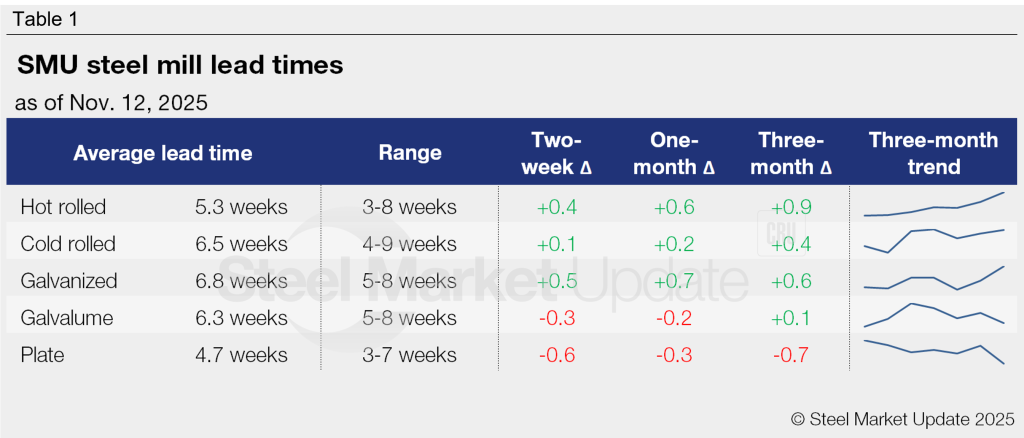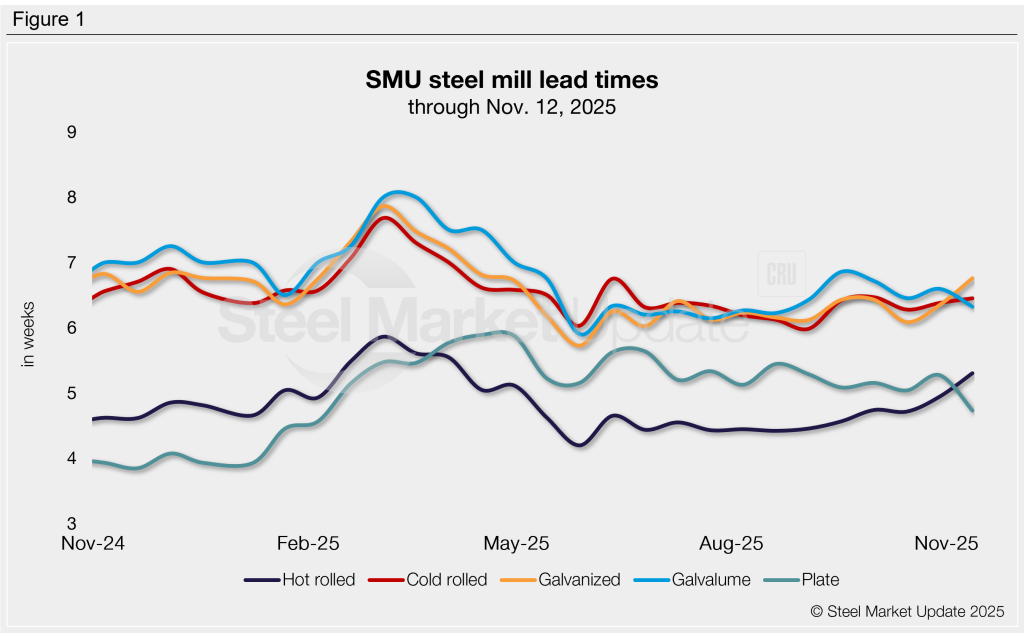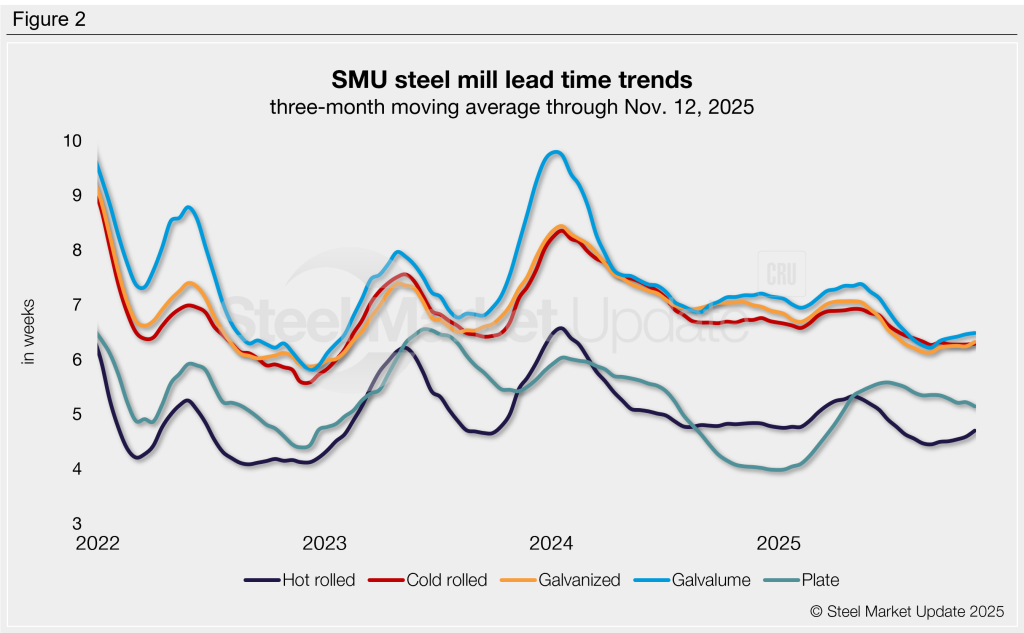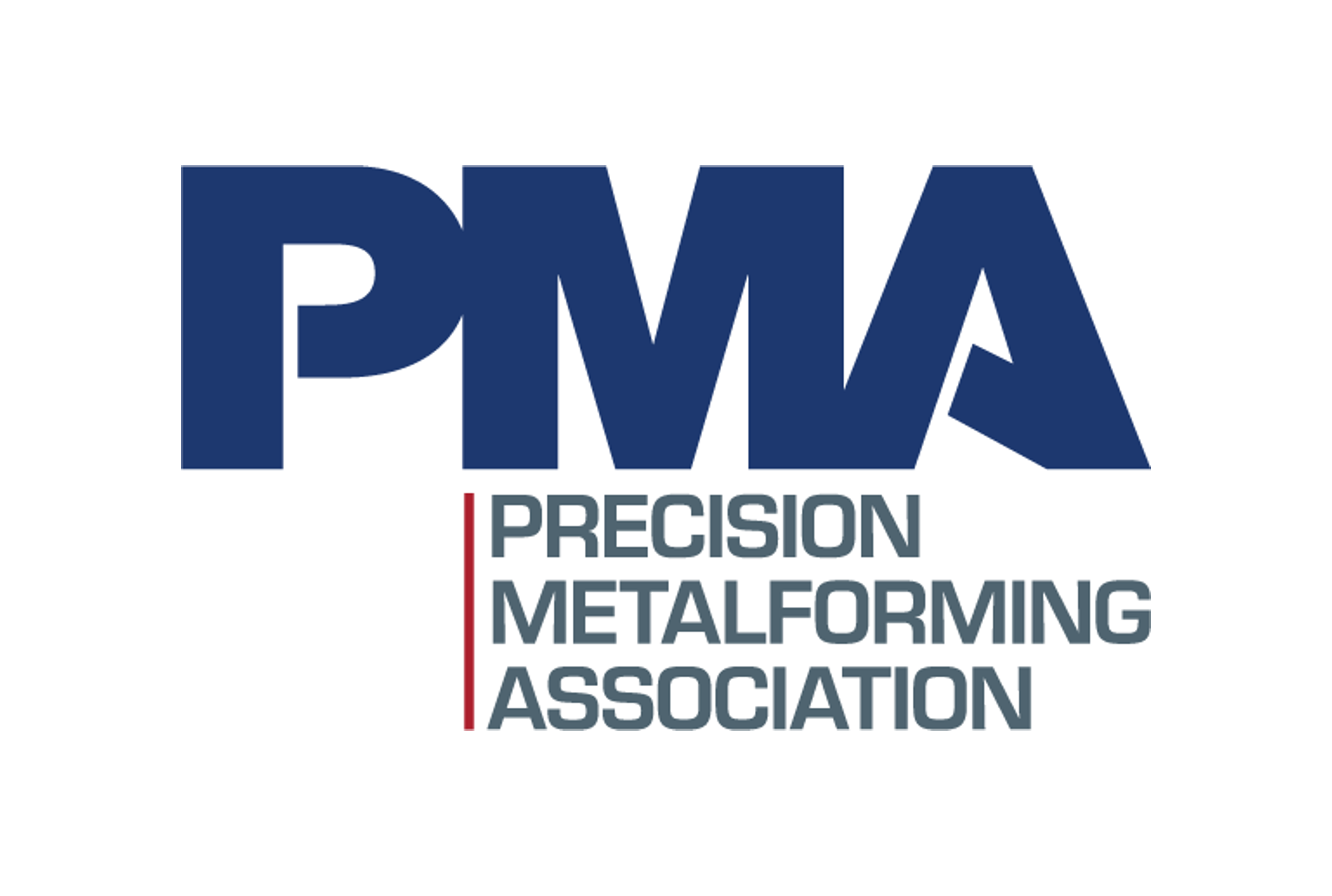Market Data

November 13, 2025
SMU Survey: Sheet lead times inch higher, plate shrinks
Written by Brett Linton
Steel mill lead times extended marginally this week on most sheet products but declined for plate, according to responses from SMU’s latest market survey.
Production times for three of the four sheet products we track extended from our late-October survey by as much as half a week, but they remain within a few days of the multi-year lows witnessed over the summer. Meanwhile, plate lead times declined by over half a week, but remain within the narrow range they have been in for months.
The average lead time for hot-rolled coil is approximately five and a half weeks. Cold-rolled and coated products are in the mid-to-upper-six-week range. Plate is just over four and a half weeks.
Table 1 summarizes current lead times and recent changes by product (click to expand)

Compared to our late October market check, three of our lead time ranges shifted this week:
- The longest hot rolled lead time considered increased from six weeks to eight.
- The shortest cold rolled lead time considered decreased from five weeks to four, while the longest increased from eight weeks to nine.
- The shortest plate lead time considered decreased from four weeks to three.

Buyer predictions
The majority of buyers (56%) expect stable lead times over the next two months, down from 66% in our late October survey. The remaining third (36%) foresee lead times extending in the near future, up from 26% two weeks prior. Just 8% anticipate contractions, similar to recent surveys.
Here are some of the comments we collected:
“Flat, the economy isn’t good enough to support enough new business to move the needle.”
“Flat, domestic mills are more efficient at keeping imports at bay.”
“Extending, I’ve been hearing from a decent number of manufacturers and an economist that business activity will pick up in Q1.”
“Extending as mills shut down.”
“Extending – part of this is holidays playing a role. Mills will try to hold longer lead times thru Q1 if possible.”
“Extending as demand turns slightly positive.”
“Contracting. At some point, imports will find a way back in. Likewise, there is more domestic capacity coming online in 2026.”
Trends
To highlight broader trends, lead times can be calculated on a three-month moving average (3MMA) basis (Figure 2). Two of our five 3MMAs were unchanged this week compared to late October (cold rolled and Galvalume). Two inched a 10th of a week higher (hot rolled and galvanized), and one moved the same amount lower (plate).
Overall, sheet 3MMA lead times remain just above the two-year lows seen in early September. The plate 3MMA has trended lower since August but remains about a week longer than it was this time last year.
Average lead times by product across the past three months were: hot rolled at 4.7 weeks, cold rolled at 6.3 weeks, galvanized at 6.3 weeks, Galvalume at 6.5 weeks, and plate at 5.1 weeks.

Note: These lead times are based on the average from manufacturers and steel service centers participating in this week’s SMU market trends analysis survey. SMU measures lead times as the time it takes from when an order is placed with the mill to when it is processed and ready for shipping, not including delivery time to the buyer. Our lead times do not predict what any individual may get from any specific mill supplier. Consult your mill rep for actual lead times. Premium members can view an interactive history of our steel mill lead times data on our website. If you’d like to participate in our surveys, contact smu@crugroup.com.







